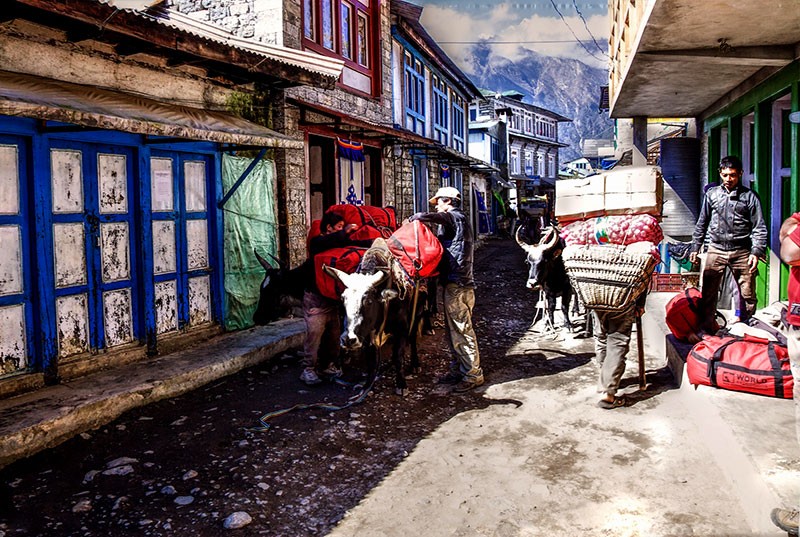Some of the queries that we receive about this trek are about the difficulty to reach the base camp of Mount Everest as compared to other popular trekking destinations like Annapurna Base Camp and Mardi Himal trekking. Let's find out, shall we?
Mount Everest Base Camp, which stands at an elevation of 5300 meters above sea level, takes 12 to 14 days to reach based on the package and itinerary you have chosen. Importantly, in this long-planned hike to the base camp, you will have enough days to rest and acclimatize your body. Altitude will not be an issue for you as long as you take days off to acclimatize.
First thing first, is it actually an intense move to reach Everest Base Camp? No. Traveling to the Everest base camp is much simpler than you envision. Yearly, many individuals who don't have any past trekking experience make it up to the base camp to appreciate its beauty.
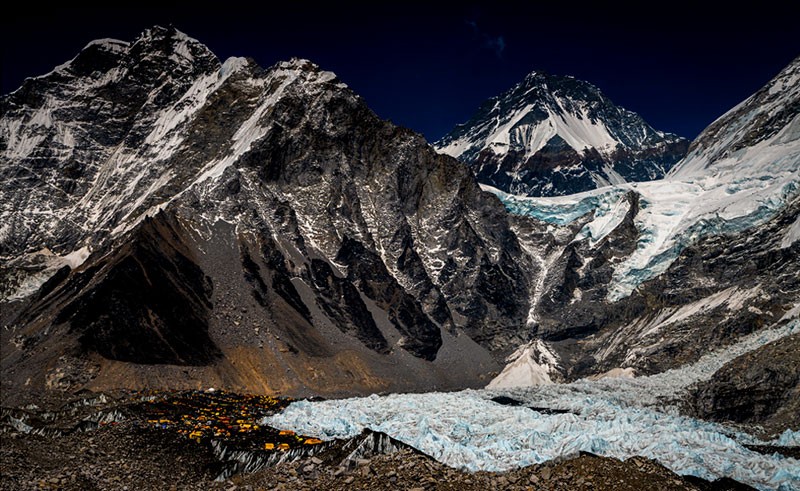
Throughout the trek, we climb through a lopsided rough path twisting to a great extent with incidental rising and plunging on mountain ways. Apart from the rocky trail, the last two days will be the hike on a lateral moraine. The path leading to the Everest base camp is zigzagged making it easier to ascend and descend. And between these zigzagged trails you can find enough time to rest while chitchatting with fellow travelers or friends.
Because of the nature of the latter part of the trail, it can get a bit slippery with ice. However, making it across this terrain is not technically challenging and you don’t require any special skills or tools. The hike through this terrain is straightforward. The only thing you need to concern yourself with is carrying a tiny spike to put on your boots on an icy trail, and the rest is easy. Once you pass through this terrain you will find yourself standing in the shadow of mighty Mount Everest and that feeling is beyond expectations.
How long does it take to trek Everest Base Camp?
The standard course to Everest Base Camp Trekking can be finished in 12 to 14 days. Keeping up with the standard itinerary of the EBC trek, you will be traveling from Kathmandu to Lukla airport, also known as Tenzing Hillary Airport. From Lukla, you will follow an ascending route to Mount Everest base camp, passing through the villages of Phakding, Namche Bazaar, Dingboche, and Tengboche.
Some choose to reduce the number of days of trekking by avoiding the acclimatization days and walking too fast. However, we do not recommend that. Whether you are trekking with Himalayan ST or trekking alone without a guide, it is best to stick with the standard itinerary. You can, however, shorten the trip to EBC by Hiking to EBC and flying back to Kathmandu from Everest Base Camp.
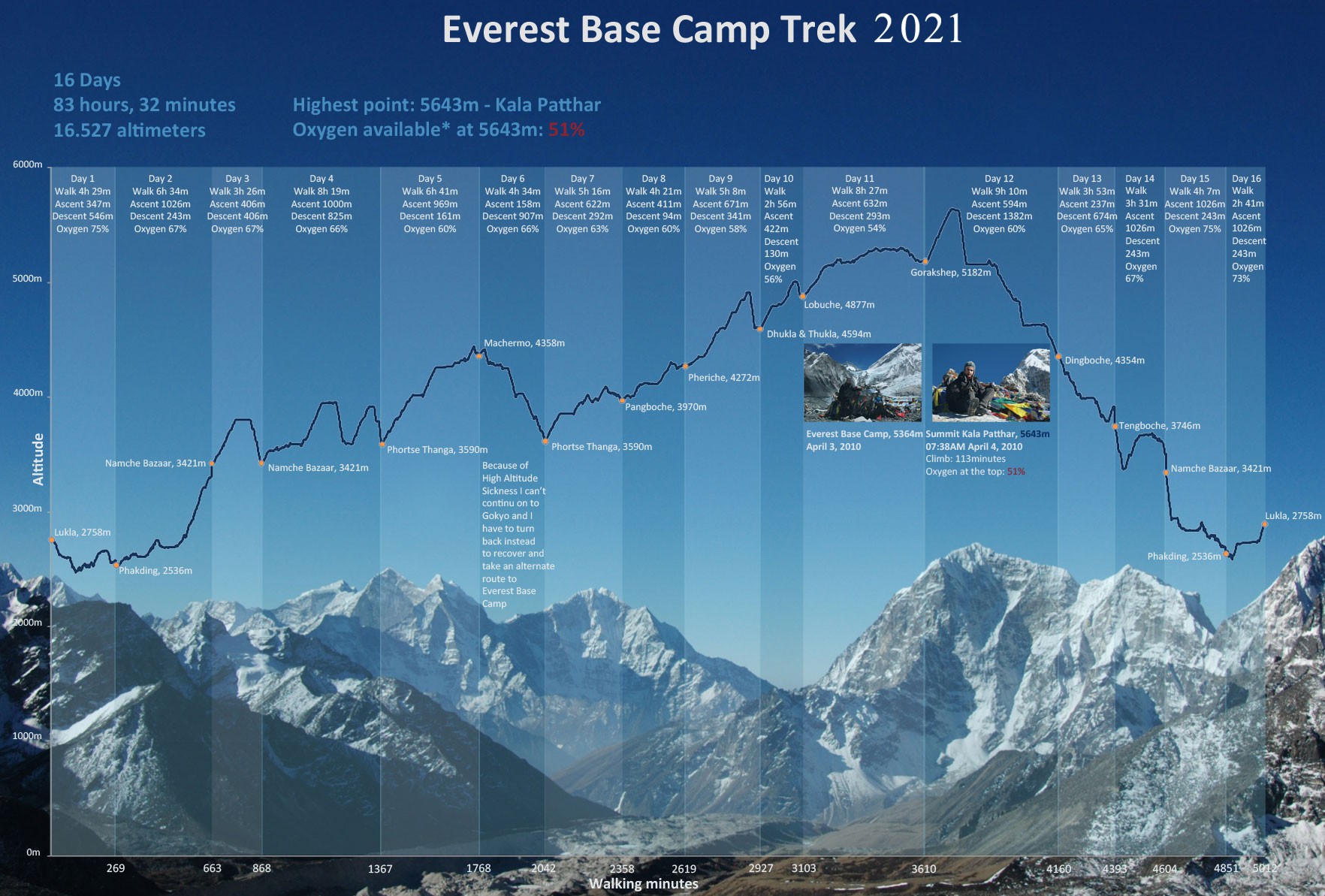
If you want to spend more time in the Everest region, you can follow other routes like Jiri to Everest base camp or add other destinations from the Everest region, like Gokyo Lake and Chola Pass. These routes are explored by comparatively fewer travelers and you can have an untouched experience. If you consider these options, be sure to choose a good trekking agency that can assign you a guide that is experienced in the region.
What fitness level do I require to hike Mount Everest Base Camp?
The fitness level you require to reach Mount Everest base camp depends greatly upon your decision to trek alone or with a trekking agency. Generally, trekking agencies provide you with guides and porters. Porters carry up to 25 kgs for two people. (1 kg = 2.2 lbs) Traveling with a porter, you still have to carry a daypack for your essentials like a camera, water bottles, and more. The daypack will generally weigh about 5 kilograms. But it's nothing compared to the 15+ kg backpack you have to lug for more than 12 days in the mountains. So, it’s safe to say, you need a certain fitness level to complete the trek.
If you are a regular hiker or even a casual backpacker, you will do just fine. It’s certainly a plus if are physically active. Staying optimistic, this trek is doable for everybody if you are prepared to invest a little time in yourself. Many first-time trekkers have completed the Everest base camp trek with us.
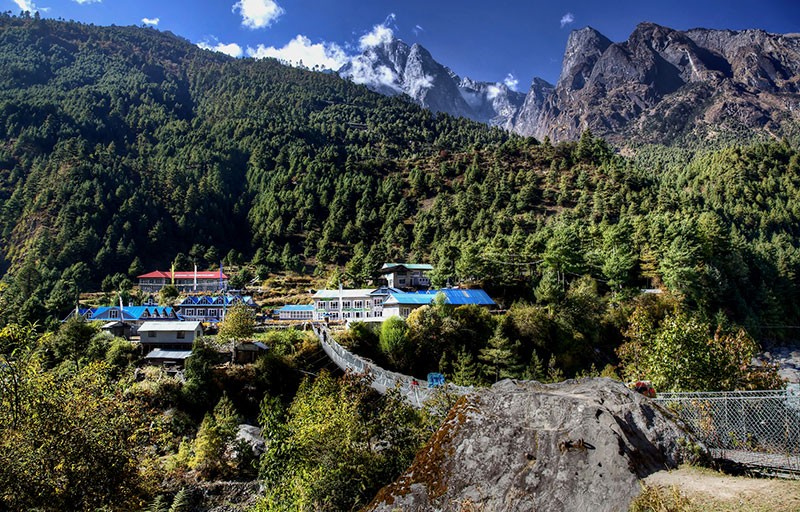
To prepare for the trek, you can start your training that focuses on increasing your stamina and strength. You can start by going on short day hikes with a backpack If hiking is not an ideal option where you live, you can indulge in exercises like cycling, swimming, and jogging. Consult with your doctor on how you can increase your strength with aerobic workouts, cardiovascular workouts, and strength training.
In addition to the physical strength that you need for the trek, altitude sickness is a real and ever-present issue that you need to deal with.
Is Everest Base Camp Dangerous?
Talking about altitude sickness, most travelers are really concerned about having to back down from the adventure. Yes, a lot of travelers that have started the trek without proper preparations, have returned back due to AMS. You don’t need to worry though. With enough preparation, altitude sickness can be prevented.
Trekking to the foothills of the world's highest peak, Mount Everest, involves spending quite a time at an elevation of 5000 meters and above. This trekking trail is in the high-risk zone for various mountain sicknesses like AMS, HAPE, and HACE. If you stick with the plan, the chance of getting caught with anyone is very minimal.
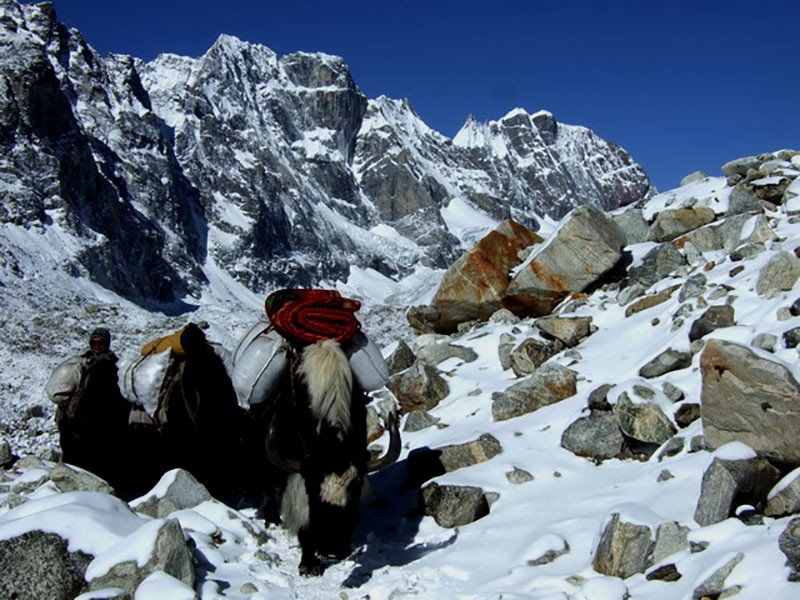
While trekking to the Everest Base Camp Trek, it is best to it with a local agency with experienced guides who will preplan your trip, give you details about the potential risk, and constantly monitor your health condition during your trip.
Another thing you need to consider while walking in the mountains of Nepal is the donkeys, mules, and other cattle that walk on the trail. You have to be careful while going upwards because the cattle move fast and don’t stop for people. In very steep areas, it might be life-threatening. If you hear the bells on the cattle’s necks, make way for them and be sure to not stand towards the slope. Fortunately, there’s no chance of encountering dangerous wild animals.
If you run into any problems or need an emergency rescue or evacuation, your local trekking agency will manage it. It’s recommended that you have insurance because high-altitude evacuation will cost a fortune.
When is the best time for Everest Base Camp Trek?
The Everest Base Camp trek has two major seasons for trekking: autumn and spring. Due to climate change, the duration of the trekking season has increased to four months from three months every season.
The autumn season starts in September and ends in December and the spring season starts in March and ends in April. These seasons are best because they have stable weather, little to no rain, and great visibility of the mountains. Rhododendron trees bloom in the spring, and the trail covered in red flowers is a sight to witness. This is also the mountain expedition season.
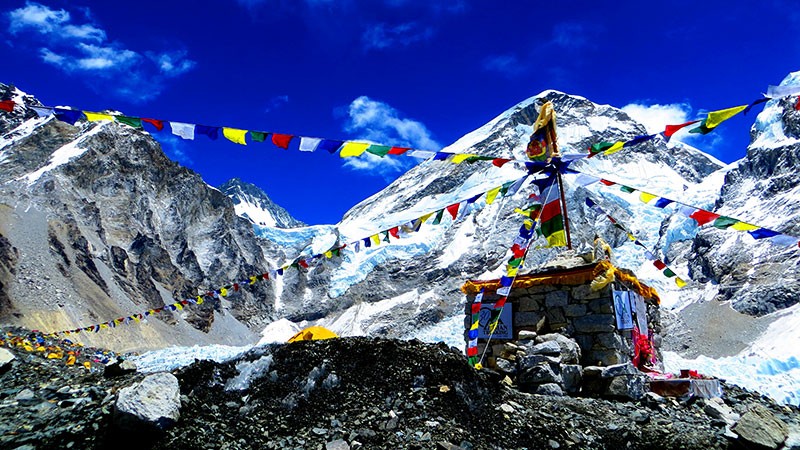
Hiking in autumn will give you even better visibility and walking conditions. The weather gets clearer as you advance up to the Everest base camp. There’s almost no chance of rain but it can get a little chilly up in the mountains, especially closer to the last of December. Because it is a popular time, it can get overcrowded at times.
